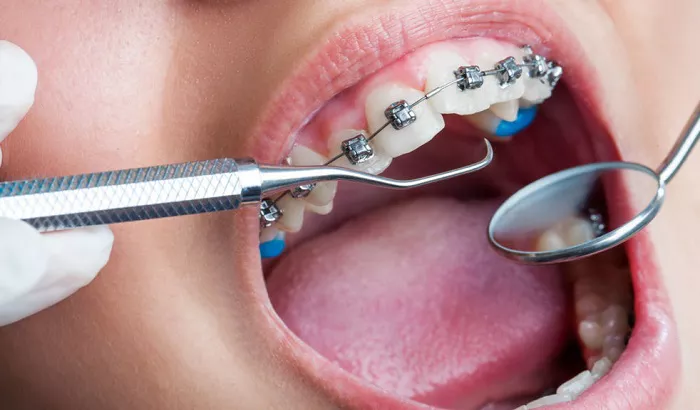When it comes to straightening teeth, one of the most common questions patients ask is: Which orthodontic treatment is faster? The answer depends on several factors, including the type of treatment, the complexity of the case, and patient compliance. In this article, we’ll compare the speed of popular orthodontic treatments like traditional braces, Invisalign, and other options to help you make an informed decision.
Understanding Orthodontic Treatment
Orthodontic treatment involves moving teeth into their desired positions over time. The speed of treatment depends on:
Complexity of the Case
Mild cases, such as slight crowding or spacing, typically require less time than severe cases involving bite issues or significant misalignment.
Type of Treatment
Different orthodontic appliances work at varying speeds. For example, traditional braces may be faster for complex cases, while clear aligners like Invisalign can be quicker for mild to moderate issues.
Patient Compliance
For treatments like Invisalign, which require removable aligners, patient compliance is crucial. Wearing aligners for the recommended 20–22 hours per day ensures faster results.
Biological Factors
Age, bone density, and how quickly your teeth respond to movement can also influence treatment duration.
Comparing the Speed of Popular Orthodontic Treatments
Here’s a detailed comparison of the most common orthodontic treatments and how long they typically take:
Traditional Metal Braces
Traditional braces are one of the most effective and widely used orthodontic treatments. They consist of metal brackets bonded to the teeth and connected by wires and elastic bands.
Average Treatment Time: 18 to 36 months
Best For: Severe orthodontic issues, such as significant crowding, bite problems, or jaw misalignment.
Why It’s Faster for Complex Cases: Braces provide precise control over tooth movement, making them ideal for correcting severe issues that other treatments may not address as effectively.
Ceramic Braces
Ceramic braces function similarly to metal braces but use tooth-colored or clear brackets for a less noticeable appearance.
Average Treatment Time: 18 to 36 months
Best For: Patients who want a more aesthetic option but require the effectiveness of traditional braces.
Speed Comparison: Treatment time is similar to metal braces, as both use the same mechanics.
Lingual Braces
Lingual braces are placed on the back of the teeth, making them invisible from the front. They work like traditional braces but are customized to fit the lingual (tongue-side) surface.
Average Treatment Time: 18 to 36 months
Best For: Patients who want a discreet option but need the precision of braces.
Speed Comparison: Treatment time is comparable to traditional braces, though adjustments may take longer due to their placement.
Invisalign (Clear Aligners)
Invisalign is a popular brand of clear aligners that uses a series of custom-made, transparent trays to straighten teeth.
Average Treatment Time: 6 to 18 months
Best For: Mild to moderate orthodontic issues, such as slight crowding, spacing, or minor bite problems.
Why It’s Faster for Mild Cases: Invisalign uses advanced technology to plan and execute tooth movements efficiently. However, its speed depends on patient compliance.
ClearCorrect and Other Clear Aligner Brands
Similar to Invisalign, ClearCorrect and other clear aligner brands offer a discreet and removable orthodontic solution.
Average Treatment Time: 6 to 18 months
Best For: Mild to moderate cases, with treatment duration varying by brand and case complexity.
Speed Comparison: Comparable to Invisalign, though some brands may have slightly longer treatment times due to differences in technology.
Factors That Can Speed Up Orthodontic Treatment
While the type of treatment plays a significant role in determining speed, there are steps patients can take to ensure faster results:
Follow Your Orthodontist’s Instructions
Adhering to your orthodontist’s guidelines, such as wearing aligners for the recommended time or avoiding certain foods, can prevent delays.
Maintain Excellent Oral Hygiene
Keeping your teeth and appliances clean reduces the risk of complications like cavities or gum disease, which can prolong treatment.
Attend Regular Appointments
Regular check-ups allow your orthodontist to monitor progress and make adjustments as needed.
Consider Accelerated Options
If speed is a priority, ask your orthodontist about accelerated orthodontics or self-ligating braces.
Which Treatment Is Right for You?
Choosing the fastest orthodontic treatment depends on your specific needs and goals:
For Mild to Moderate Cases: Invisalign or other clear aligners are often the fastest option, with treatment times as short as 6 months.
For Severe Cases: Traditional braces or self-ligating braces may be more effective and faster for complex issues.
For Maximum Speed: Accelerated orthodontics can significantly reduce treatment time, though it may not be suitable for everyone.
The Role of Technology in Speeding Up Treatment
Advancements in orthodontic technology have made treatments faster and more efficient:
3D Imaging and Digital Planning
Tools like Invisalign’s iTero scanner allow orthodontists to create precise treatment plans, reducing the need for adjustments and speeding up the process.
SmartForce Attachments
These small, tooth-colored bumps help aligners or braces apply the right amount of pressure for faster tooth movement.
High-Tech Materials
Modern braces and aligners use advanced materials that are more comfortable and effective, reducing treatment time.
Conclusion
The speed of orthodontic treatment depends on the type of appliance, the complexity of your case, and your commitment to following your orthodontist’s instructions. While clear aligners like Invisalign are often the fastest option for mild to moderate cases, traditional braces or accelerated orthodontics may be better suited for more severe issues.To determine the fastest and most effective treatment for your needs, consult with an experienced orthodontist. With the right approach, you can achieve a straighter, healthier smile in less time than you might expect. So, take the first step today and explore your options for a faster transformation!

